|
Welcome to interview 4 in the software buying series, and our second interview about the things you should consider when using app builder software to create software by yourself - without needing to know any programming languages, or write any code! Robert Cardiff is the Director of Sales at BuildFire, a mobile app builder platform which describes itself as “The world's most advanced mobile app builder.” We’ll find out more about Buildfire, and the app builder market in general, which empowers non-technical entrepreneurs and business owners, and allows them to create their own mobile apps from scratch. Welcome Robert! Thanks for joining me today. What can you tell us about BuildFire? Buildfire got started about 5 years ago. Our 2 co-founders started off building apps, and got some customers who were asking for iOS and Android mobile apps. They found developers from overseas, and started building apps for their customers from the ground up. A few apps in, they started to realise that they were building the same things for every customer. Separate code bases are needed for iOS and Android, but they needed to build a dashboard for the clients to manage typical things like push notification messages used to send updates to users, and content management tools to manage the text visible in the apps. Every time changes were required for these elements, a developer was needed to push the new updates, or files. So they thought: “Why don’t we build the fundamental pieces needed for mobile apps and then we can customise the apps from there to change the layout, and add additional features?” So they built Buildfire 1.0, which:
Our purpose statement at BuildFire is: "BuildFire empowers the business professional to solve complex problems with elegant mobile solutions that are simple to build, easy to manage and available to everyone." Today, we have apps being used in every single country except for North Korea. We’ve had great success, because we’ve already created all the fundamental mobile components that typically take many months to develop. If you’re serious about developing a mobile app, chances are we are a perfect fit! Maybe we’ll see the North Koreans using BuildFire in the future! I can see how having these common reusable components is a pretty smart idea. It’s efficient! Every app needs login / logout screens, password management / reset functionality, basic navigation and settings management etc. Every company with a decent app will expect to create these items, they’re pretty much universal, so it makes perfect sense. How would you describe the app builder market today, and how would you describe your positioning in the market, in comparison with your competitors? We’re very aware that there are tons of competitors in our space, and you have 2 different options: i) rigid platforms where you’re quite boxed into the functionality offered, or ii) huge monster companies like IBM with products where you still need to build everything up from scratch using their tools, although for small businesses, spending several hundred thousand dollars on tools like that just isn’t a realistic investment. Definitely not! With Buildfire we sit in the middle, we have a quality product, and scalable core infrastructure, we provide customers with a management dashboard, and we have a bunch of features that can be used across a range of apps to solve problems, or to capitalise on opportunities that are relevant for businesses. Just to clarify, what kind of volume of apps does BuildFire manage? We have 5,000 apps in the App Store, and over the course of 5 years, over 10,000 apps have been created. Thank you. So, what should a person know before getting started with Buildfire? Be aware of the options available. When we do a demo with a client, or prospect we’ll educate them and say: “You can hire a local developer in your own country, and potentially get a great product, and the developer will speak your language, and be in your time zone, but you’ll be paying a high hourly rate. Or, you could outsource the development overseas for $30-40+ an hour. Then there are the app builder platforms which are quite rigid, and whales like IBM, and the more full-featured ones like ours. Do you class yourselves as a SaaS business? We are a SaaS platform. We have apps that have millions of end users on them. We can set up your app, and develop code for you, or you can have your own developers, or designers do the work for you. Alternatively, you can figure things out for yourself. Could you give us an example of how long it might take to build an app using your platform? You can build an app in less than a week! That's fast! What kind of app? To give you an example, an education app. Without any technical, or coding knowledge, you can go to our website, click on the button in the top right hand corner to say you want to build an app, say you want to build it yourself, choose an education template, name it, and start putting in your app icon design, your landing screen designs, and start uploading your YouTube videos, and your PDFs and you’re done! We do have people come onto the platform and create apps very quickly. As an example, there’s a blogger with a pretty good online following, who has scaled their app to millions of end users without doing any custom development on the platform, they just used the templates that we have. At the other end of the scale, if you want to develop a custom app on our platform, you can spend 3 to 6 months developing custom integrations with different back-end systems, pulling in the relevant data, and displaying the data how you want it. Once you’re ready to deploy to iOS, or Android, there are additional costs, and you’ll need to get the app approved. There are some limitations to approval, and app marketplace submission costs to pay. The approval process can take between 1-3 weeks depending on Apple and Google and how they’re feeling! (If you're wondering about app submission costs, these are $99 USD annual membership to have an app in Apple's App Store, and a $25 USD one off registration fee for the Google Play Store.) Yes, I talk about that in Don't Hire a Software Developer Until You Read this Book, my handbook for tech startups & entrepreneurs. If you’re not careful, you’ll play “app ping-pong” with Apple in particular, who will bounce your app back to you repeatedly if it’s not up to their standards. Allow plenty of time for app store rejections - especially if you’re new to app development, because you’ll have to keep resubmitting your mobile app until the folks in the app marketplaces are 100% satisfied. This is also why product, and usability testing throughout the development of your app is so important. Even if you’re blind to the bugs, usability issues, and kinks in your app, the app stores won’t be and you could end up with a long list of amendments to make before you’ll be allowed into the app marketplaces, frequent feedback means that you can “clean up” the app as you go along, rather than having a shocking amount of rework to do when you mistakenly thought the app was ready for use! The “back-end” of the product, and what goes on behind the mobile screens is the backbone of an app, so when I prepared my questions for you, I wanted to consider how well different app builder tools can support long-term growth. These NFRs, or non-functional requirements, are capabilities, qualities, and boundaries that a system should have that go beyond the functionality and features that an app user can see, or touch. Often people don’t give them a lot of thought, but without these, most software would be unusable, or of extremely poor quality. EXTENSIBILITY is about the ability of an app to be extended so, I’d like to confirm whether it’s possible to hire a coder to do major coding on top of the existing platform, or to add custom code within the app? How would this work? If you wanted an ecommerce store, there’s no way you’d build an ecommerce platform from the ground up, you’d go to Shopify, and if you were going to go and start a blog, you’d probably go to WordPress, because they power something like 30% of the world’s websites, and it has templates, and plugins. We also offer templates and plugins, and we say that what WordPress does for websites, we do for mobile apps. If you need something that’s custom, we can help with that. People come to us and say: “I only have $1000 and I just want to set up an app to help us communicate more effectively with our customers”, then 6 months down the line they say: “Hey, I want to integrate our back-end ordering system into the app, so customers not only get announcements about new products, they can order products using the app.” We can then do that custom back-end tie-in for them. You can also use your own developer to create the features you want, and integrate that feature into our core. We have a developer portal that allows for a fully custom mobile app on the front-end to be built while leveraging our core solution. MAINTENANCE, AND AVAILABILITY OF THE SERVICE What is the standard uptime / availability of your service? It’s 99%. (If you're wondering, that translates to just over 7 hours of unplanned downtime per month...) How do you monitor app health and maintenance for each customer? We have a DevOps team constantly running tests on the servers to ensure that each app is healthy. When there is an issue with a feature the customer reports the issue and our support team creates a development ticket and our developers fix the issue. How would I report an issue and get it resolved? Each customer has the ability to reach out to our support team through the BuildFire Web Control Panel, and to notify our support team of an issue. Our support team reviews and confirms the issue, and then creates a development ticket. When the issue is fixed we notify the customer and ask them to test the fix. What’s your average turnaround time for fixing production bugs? It varies depending on type of issue. SECURITY What security measures exist to prevent app cloning, hacks, and to keep customer data, including credit cards safe? We run penetration tests regularly (this involves hacking, or attacking one's own systems, or hiring testers, or specialist testers such as "ethical hackers" to do this for you, to identify vulnerabilities so they can be addressed.) We maintain the most up-to-date standards related to data compliance. SCALABILITY is the ability of an app to grow, and to support growth in terms of increased users and other increases in demand for resources such as database storage, memory, and other computing requirements.) How does BuildFire enable users to scale their apps? Finding an app builder product that you can grow with is something that I’d encourage every business to be conscious of as they develop their mobile strategy. With BuildFire, you can start small, and grow, so that mid-way through the process, you don’t have to switch platforms, because you can’t scale and have to deal with that headache. We have a global cloud infrastructure that handles scalability and any latency issues related to geography. Latency issues present themselves in the form of slowness and delays when using apps. You can find a checklist of NFRs taken from one of my software survival guides here. Let’s explore this further - if downloads of my app suddenly exploded, and the number of daily users I have on the app dramatically increases, say from 1,000, to 100,000, to 1,000,000 daily users just to give an extreme example (to put this into context, Twitter has more than 150 million daily users, and Instagram have more than 500 million daily users) or I had a sudden extreme spike in traffic, which can happen if content that drives visitors to your app were to go viral, for instance, how would BuildFire handle that? Are there any boundaries on scalability? That is why we recommend using a service like ours! Those big headaches about scaling up to many thousands of users are things you don’t have to worry about as a business owner. As usage increases, our architecture spins up multiple servers to handle an increase in demand. Can Buildfire apps be internationalised to support multiple languages? Yes. We have over 20 languages that an app administrator can choose from to set as the core language for standard fields. Additionally, an app administrator can build different sections with the same content in different languages. If I build an app using your platform, who owns the app, the code, and the Intellectual Property (IP) behind the app? The content, data, user information, revenue generating potential, and design is 100% your property. BuildFire has developed over 50 different features (e.g. YouTube integration for video streaming, chat forum, etc.) We own the IP for those. We also provide it as an open source feature, so if a developer wanted to make a copy of the code, enhance the feature, and maintain it, then that developer or app owner would own the IP. Additionally, when we develop custom features / integrations for our customers, the customer owns the IP. What happens to apps that are not in use, but still exist on your platform? Do those customers still pay you a fee, and can customers leave “dormant” apps on the platform for an extended period if they need to? We provide the ability for a customer to remove their app from the app stores and pay us a small monthly or annual fee to keep it "dormant" whilst still retaining access to their app. In the event they cancel the hosting subscription altogether, then the customer would no longer have access. In the event we develop a custom code (plugin) for a customer, they will always have access to that code because they own the IP. What skills, or knowledge are needed before people start using your tool? Are there any top tips that you can share for new BuildFire users? First, they need an idea for an app that solves a problem. They also need the time to add content into the app, and to make it an app that is worth downloading. If users are not doing any custom development, the app still needs to be made as attractive as possible using the features, or templates we provide. You can use an online design editor like Adobe Photoshop or Adobe Illustrator to create app icons, loading screens, banners, elements, and tools to crop and resize images. We recently launched a photo editor right inside our platform too, so that’s another option. What you don’t need is a development background. My mom is the least technical person I’ve ever encountered. I said to her: “I want you to build an app” and she said there’s no way she could ever do it, but I talked her through it. She selected a template, and we started dragging and dropping, and adding and removing features, and before she knew it, she had developed an app. We have a full development and design team to assist you. It’s not a 1 person development team, where if something happens to them, you’re out of luck. We have a team of 35 people to support you. Planning, and clarity are essential, in terms of at least having a clear starting point in terms of a target market and the key features you need in order to solve a problem, otherwise you’ll go round in circles without a clear idea of what you’re trying to achieve! Can you give us a high-level breakdown of the types of people, and businesses that use your app? Typically, there are a few types of customers – there are customers with a design who have a few support questions, and we answer them, and they’re off to the races. The next type does not have a design background, and they want to set up an app, and do most of the heavy lifting but need help from a designer. Are there any use cases for which your platform would be unsuitable? If so, why? In the event a customer wanted to develop a mobile app game that needed a high-sensitivity touch screen, we would recommend developing the mobile app from the ground-up for iOS and Android. If someone wanted to mix and match – to do some DIY work, and get some design help from you – how much should they expect to spend? We have a professional services team, and a design team, and in 3 to 5 hours they can work alongside a customer to help them with the design related elements that the business owner might not know how to do themselves. 5-10 hours of work for our design team might cost $750 / £565 upwards. For that price, we’ll have a designer create some design assets for you, and help you set up a structure for your app, and show you how to put the content in it, so when you’re ready to publish the app it’s aesthetically pleasing to whoever is going to download it. From there, the sky’s the limit. It depends how much custom work you need. We have custom apps where users have spent a quarter of a million dollars on customisation, and built apps for Fortune 500 companies that have paid us $150,000 for a custom integration to their back-end employee management system. At the other end of the scale, we have a small, non-profit church with a budget of $500, who pay us $60 a month to have an app so they can better communicate with their audience. So it really varies! Can we talk more about the key features of your app? Which features and benefits do you think are most helpful for users? You mentioned photo editing, but also your templates… A lot of people need inspiration to start with. If you go to Buildfire.com, and choose the option to build an app on your own (see the previous screenshot above), and right there you’re prompted with a range of options as a starting point; whether it’s a university app, an internal communications app, a restaurant app, including online ordering features – there are different options that people can choose so they can get started right away. So, for example, if I’m a restaurant, I may have a bunch of people who buy from me repeatedly, and I might want a lot of features for my app:
All the features I’ve just listed are already developed, but if you don’t want all those features yet, you can choose which ones you want, and remove the others with just a click of a button to edit the app. The list above is a nice starting point for noting down the list of features you require. Just start by saying “I want customers to be able to do…. [insert activity] using the app” and create a list of items grouped into topics, or categories. Agile teams will say “As a customer, I want to be able to [Insert activity], so that I can [insert benefit].” This is done to make sure that build requirements are clear, but also because by stating the activity and benefit, you can really see what the customer will get from using each feature, and this will help you to prioritise one feature over another in terms of value. This is important, because there is ALWAYS more to do, than time and money available, so by picking the right activities and benefits, and not wasting time on low value, or “meh, so what?” features (even if YOU personally like them) this can really make a difference. In the interview with Christopher Gimmer from Snappa, we talked about teams being more excited over features than their customers, and this is a very good way to waste time and money! Two entrepreneurs could choose to build the same app, and one could end up with a much better product, because they made better decisions about which features to build (and which to drop!) This will also come down to how well the entrepreneur identifies, and interprets the needs of their target market, the problems they have, and the method they use to solve those problems. So don’t just build based on your own ideas and opinions – you need external feedback! What other advantages do app builder tools have over hiring a developer to create an app for you? A big one is this - when you hire a developer to build a mobile app, you might say: “I want people to be able to book rides, and on the other side: “I want drivers to be able to see those rides, and choose a ride, and despatch their vehicle to collect the user.” I’m talking about Uber, right? But then the developer finishes development for your Android, or iOS app, and you say: “I also want to be able to see all the rides coming through, the back-end analytics, what’s happening, and who’s being dispatched” and the developer says, “well, you didn’t tell me you needed that before”, and you say “well that’s obvious I need to be able to manage this!” and they say, “Well… that’s an extra $X,000.” What we’ve done at BuildFire, is built up a web control panel, where everything that has been built, can be managed, along with a robust analytics system, because whatever you’ve selected for the front-end of the app that the user can see, needs to be controlled and managed from a business standpoint at the back-end, and all that needs to be considered. A developer might literally develop exactly what you’ve asked for, but not necessarily think about all the use cases, (the scenarios and circumstances under which users will need specific functionality) or edge cases (less common scenarios) that you haven’t thought of because you’ve never developed software before. That’s one of the key challenge in building software for people who are new to it. Be careful what you ask (or don’t ask) for! This is where Purposeful Products steps in to help its clients. You do need to plan at a more detailed level than most entrepreneurs realise when they first start thinking about building an app, otherwise both you, and the developer(s) relying on details from you will be stumbling around in the dark, and this is often how people end up with a “bad” product that isn’t fit for purpose because it doesn’t hang together well, or have all the key elements it needs. Nothing is obvious, and everything has to be clearly stated because developers aren’t mind readers, and are expecting you to provide them with information because you're "the boss", and you're paying them to do a job for you! People often forget (or don’t know to ask about) account administration, app monitoring, analytics tools, and functionality (or integrations) to provide customer support. The onus is on the entrepreneur to think of these things and be clear about how the whole app needs to work. The problem is that entrepreneurs new to tech don’t yet know about all the elements that go into building an app, so there are often big gaps in their knowledge about what is possible, and what they should do, and ask for. Book a free 30 minute consultation session to ask us any questions about getting started via our Calendly appointment booking page: https://calendly.com/purposeful-products. When you develop mobile apps, you have to develop them in multiple languages – possibly for iOS, Android, or Windows (although it’s a little outdated) so you have multiple coding languages there, and you’ve got to hire a developer for each one of those, because finding someone who knows how to write code in all these languages, is not typical… (iOS programming languages include Swift, and Objective-C, and Android apps can be coded in Java, and possibly C, or C++.) Right, and even if they can develop in 2 or 3 of those languages most developers have a particular strength, so they will be more proficient in one than the others, so it might actually be best to hire a specialist who really understands each platform so you get the best results in each case… This is why hybrid apps can be hugely convenient - another topic I cover in Don't Hire a Software Developer Until..., Hybrid apps are written in HTML5, and display characteristics common to both native apps developed exclusively for a particular app store, and web apps. They are actually web apps, which can put into "wrappers" and submitted to the Apple, or Google Play stores. Sadly, we've worked with people who had already paid to have an iOS app built by the time they made contact with us, when they could have built a hybrid app suitable for the web, iOS, and Android. If you don’t require complex app gestures, a hybrid app maybe more than adequate to meet your needs, so if you want to build an app, consider how viable a hybrid app is before you shell out cash for separate apps. It’s also important to remember that an app is a living breathing thing, it’s not like a website that you can build once and it’ll work as long as you keep paying your hosting fees. iOS and Android come out with new operating system updates every 3-6 months, so you’ll probably need a developer on hand to maintain your mobile app(s) full-time. We’re always maintaining, so when the iPhone X comes out, we’ll be developing updates for that app - you’re also paying us for that. You’ve got to think about:
I explain how to plan what you need to build, step-by-step, and to create user journeys, and wireframes for your first software release in Don’t Hire a Software Developer Until you Read this Book. Understanding the components of an app, including what you can see, as well as what is needed behind the scenes, at least from a high level is important, and I explain all that in the book and audiobook, because how well you cover the bases can affect your success too. There are different types of developers - you don’t want a rookie developer, or a “yes man” who won’t question you, ideally you need assistance from one who understand tech, and business. You do need a business minded developer to guide you. Aside from charging upfront for an app, does your app handle in app purchases, and/or support monthly recurring subscription charges? Yes. We have an integration with Apple and Google Play to facilitate in-app purchases. This feature allows the app administrator to segment parts of the app based on in-app purchases. Once a purchase has been made, then the section is made available to the user. We provide in-app purchases on our Professional Hosting Plan for $149/month. Can you talk to us about last years’ Apple's announcement? This looked like a serious threat, or even “the end” for apps created using templates, and the app builder market as a whole: From Apple’s App Store Review Guidelines: “4.2.6 Apps created from a commercialized template or app generation service will be rejected.” What are my options following this change? In the US, a large number of people use iPhones. When Apple released its 4.2.6 guideline saying that people could no longer use services like BuildFire, that was a big issue for our company, and other services like ours. What Apple were saying was that they are trying to clean up the quality of apps in the App Store, meaning that they want unique apps. But the problem is, whether apps are templated, or custom many requirements are the same - people want geolocation, push notifications, list views, map views, to sell products… Apple has since released an update that said that people can still use app builder platforms, and as we move forward, app builder platforms aren’t having specific issues having apps approved in Apple’s App Store. Thanks for that, Robert. It's great to know that the app builder market is still open for business, because your industry really has increased the options, and opportunities available for entrepreneurs. Another important thing to mention whilst we're on this topic, is that apps which aren't very interactive, and are too much like basic websites will also be rejected by the app stores, so that's another thing to be aware of when you're building an app. I also mention that in my software survival guide. I’ve found the latest version of 4.2.6, which now reads: “4.2.6 Apps created from a commercialized template or app generation service will be rejected unless they are submitted directly by the provider of the app’s content. These services should not submit apps on behalf of their clients and should offer tools that let their clients create customized, innovative apps that provide unique customer experiences. Another acceptable option for template providers is to create a single binary to host all client content in an aggregated or “picker” model, for example as a restaurant finder app with separate customized entries or pages for each client restaurant, or as an event app with separate entries for each client event.” You can find the updated guidelines here: https://developer.apple.com/app-store/review/guidelines/#minimum-functionality. The challenge of being in tech / software development is that there is constant change, and these changes can have major implications for you as a business owner. It’s important to keep an eye on app marketplace guidelines, as any rule changes issued by the app marketplaces can impact on your app sales, functionality, back end technology, and even your right to use the platforms themselves. TechCrunch have also written an article on the topic that you can find here. If that were to happen again, and Apple released another guideline like 4.2.6 then I think there would be a big push towards progressive web apps (PWAs). That is something that Buildfire is positioned for. I’m glad you have that as another option, and one lesson from all this is try not to keep all your eggs in one basket! This applies to all areas of business, for example:
Developing your own app, on your own platform gives you additional control, but this comes with risks too, so we aren't talking about making one single risk-free decision, or saying "this option is definitely good, and that option is definitely bad" (a nice idea, but impossible, because tech is too complex!) This is about assessing the risks, and advantages and disadvantages of everything you choose to do, and minimising your exposure to them through: i) the decisions you make, and ii) the actions that you are able to take to reduce and control your risks - a fundamental part of project management, and protecting your business interests. In the case of choosing an app builder tool, you need to do some due diligence research, for example:
Thank you, Robert. We've covered all these questions in the case of BuildFire! What's next for your company? BuildFire WorkForce for teams... we are working to help companies to "Streamline employee communications, Engage employees in a more meaningful way and Measure success! Where can people go to find out more about BuildFire? People can find us at: https://buildfire.com/.
0 Comments
Welcome to interview 3 in the Software Buying Series on the Purposeful Products blog. In the last post, I interviewed a representative from Flippa about how to buy an existing software application as a way of starting a tech business. The next two interviews will answer the question: “What are my options if I want to build an app myself, without developer assistance?” As someone who has come from a tech background, I wanted to open up an honest debate about the pros and cons of using app builder software, and the suitability of app builder platforms to use as a long-term, sustainable, scalable foundation on which to build a business. I’m looking forward to finding out more, and asking a few challenging questions along the way! This week’s guest is Emmanuel Straschnov, Founder of Bubble, and we'll be hearing about how to build a web app from scratch, without coding skills. Welcome Emmanuel! Please tell us about your product. Bubble is a visual programming platform that allows users to build web apps without typing any code, then lets them run their app on Bubble’s cloud platform without having to maintain servers, etc. It’s designed for startups and business owners mostly, as it helps them build their customer facing, or internal solutions for a fraction of the cost of traditional development, and gives them more control over their software. When did Bubble “go live”? We started building Bubble in 2012, and launched in late 2015. We now have thousands of businesses that run on our platform, and more than 160,000 users. Do you class yourselves as a SaaS business? Yes, though sometime PaaS (platform-as-a-service) is more suitable as we’re a platform in the sense that contributors can sell, lease and distribute plugins on Bubble and we handle the payments. Overall, our business model very much follows the SaaS model, though our software is mostly free. You only start paying when you want to use your own domain, or need more capacity for your app. Can you give us a high-level breakdown of the types of people, and businesses that use your app? Well, we have three kinds of users. Firstly, our major category of users are startup founders that launch their businesses on us, and develop the entire product on Bubble. These account for about 60% of our users. Secondly, small businesses are an important category for us, as they use us to build the solutions they would usually hire a development shop to build. These are probably 30% of our users. The last 10% are individuals and groups - schools, and students that use Bubble for personal and class projects. The categories are not necessarily distinct, we’ve seen a lot of students become entrepreneurs on our platform! What level of skill, or experience is needed to get started with your app? Bubble is similar in complexity to productivity tools like Excel or PowerPoint. If you can use Excel, you can build an app on Bubble. It’s good to have good product sense, as that’s what you’re building, but as you build it, you can easily test, and iterate to improve the product further. What are your top tips for people building apps using your tool? Three things: 1. Keep in mind Bubble is a programming tool, so you should spend some time to learn it. While it’s great to start building and experimenting, we very much recommend doing the lessons we offer to make the best out of the product quickly. We estimate the time to learn the fundamentals to 3 to 54 hours, and after these hours, it’ll be much easier to build something. 2. When you start building, it’s always great to start with a pen and a paper! It’s good to think about what you want to build and the different screens you need, etc. 3. Rely on the community! After 6 years, when you have a question, it’s very likely that someone else has already raised that question and that it has been answered on our Forum. Then if you can’t find the answer, just ask! Our community is super vibrant and friendly. Point 2 is a key recommendation that I make in my books, and when working with tech entrepreneurs. Prototyping on paper is incredibly cheap - you can buy a notepad and create numerous versions of the app, and the user journeys needed to take your users from screen to screen within it. Take the time to work steps and processes through on paper first and get clarity. Even if I’m working on multi-million pound software projects I still do this! Mistakes are free at this stage, but once you hire a developer, or make the changes in a tool, there is a greater cost in terms of money, and / or time. What else should I know before getting started? Our commitment is that you’ll be able to build your app. As a user, your success on Bubble is our success, and we’ll make what is needed so that your app can scale on Bubble. How long does it take to build an app using your tool? That’s a tough one, as people usually keep iterating on their app as they build it. In general, people have a working version of the app in a few days. What are the major components of your app? Bubble has 3 elements:
What do you consider to be the best features and benefits of your app? There are so many features that it’s hard to list them, but in a nutshell: The ability to define your own data structure, so that your database does what you need. The ability to connect to any API. As long as it’s REST (a RESTful API), Bubble can talk to it. The fact that once it’s built, there is nothing to worry about in terms of servers, etc. Bubble scales automatically as your app does! What language is your tool written in? It’s built in JavaScript and relies on Postgres for the database. Which use cases is your product best for? Bubble is web based, whether it’s desktop, mobile, or database driven apps. If my app took off and I went from 1000, to 10,000 to 1000,000 daily users, how would that increase in resources be handled? Are there any boundaries on scalability? The way it works is that you add capacity when your app needs more. It comes at $20 USD per month per unit, and you can add more units if you need them. Some users have got to 500,000 page views a day on their system. When your app gets bigger, you can migrate to a dedicated plan, when we set up a cluster of servers just for your app, which buys you a lot of room to grow! How are things like sudden spikes in traffic, or large, sustained increases in users be managed? Would there be any actions that I would need to take, or would you handle all of this? We handle the technical aspects, and have some automated systems to make sure capacity gets adjusted when you need it. What you need to do within a few hours is add some units of capacity to have the best performance. How many users does your largest customer have? It’s hard to say - some apps have few users, but a ton of data traffic. In total, apps hosted on Bubble reach more than 10 million page views a month. Does your app handle in app purchases? Bubble apps are best for the web, so in-app purchase are handled that way. You can use the Stripe or the Braintree plugins to charge the cards. What security measures exist to prevent app cloning, and to keep customer data, including credit cards safe? We take security extremely seriously. All apps are served over SSL, we encrypt data at rest, etc. For credit cards, specifically, you would use Stripe or Braintree so the credit card data can be stored on their end. Yes, handling credit card information, especially with data privacy and standards like PCI DSS, which require merchants to follow very strict rules when managing customers’ personal and financial details can be tough to comply with for small businesses. The simplest thing to do is to work with a 3rd party payment processor (also known as a payment gateway), so you don’t need to worry about compliance because the processor handles all the complexity related to compliance and storing and managing credit and credit card information. Emmanuel, who owns my app, and the Intellectual Property behind my business and idea if I build my app using your platform? Our terms are very clear. You own your app, the design and the data, we own the engine that runs your app (and that engine is not specific to your app). The comparison we use to make it easy to understand is Microsoft Word. If you write a book, you own the book, but Microsoft retains the IP of the Word software. But would the actual code related to my specific app belong to you? We don’t generate code, so this question isn’t relevant to us. You own the app design and data, we own the engine! Thanks for the clarification. What does the monthly subscription cost cover and are all services completely withdrawn if customers halt their monthly payments? The monthly fee covers the hosting for your app and access to some specific features that are related to using the app in production. The access to the software to build is free. If you cancel your plan (or you card fails a few times), you’ll lose the connection to your domain, but the app will be there and kept safe. As soon as you subscribe again you’ll be back up on your own domain. Is there any level of portability (the ability to move and reuse software in a new environment, or on a new platform, or operating system) available? While we don’t export code, apps are very open. Any app on Bubble exposes an API automatically so that you can easily read and write data from the server. So, while apps are not portable per se, they are not completely closed to the outside world! What other advantages do app builder tools have over hiring a developer to create an app for you? The main advantages are: Speed of development, and control over your app. If you want to tweak your app, you don’t need to ask a developer to do it, you can do that on your own. Are there any groups, or use cases for which your app would be unsuitable? Why? Maybe building a platform game. That wouldn’t be the best use of Bubble... If I were to get stuck whilst working on the app, what options would I have, and how long would I need to wait to get support to help me resolve the problem? We offer email support to paying customers, but to be honest, the forum is the fastest way to get an answer! As we have users around the globe, if you ask with enough details, you’ll get an answer in a few minutes, while our email support is done during business hours. Are there people out there that could build the app for me? What skills would I need to look out for when hiring? Yes, we have quite a few agencies using us, and overall the feedback we have from users is great! People often ask for freelancers on the forum as well. In terms of skills, I’d say it’s the same as other freelancers: professionalism, reliability, etc. I'm interested to know whether a person creating an app can introduce new bugs into the app, or whether any bugs found will always be directly related to the app builder platform. We have a debugger in run mode that lets you test your app without custom plugin and custom code. If after testing you still think there is a bug, you file a bug report and our team will follow up with you. Can you tell me about your timescales for fixing bugs? If there is a bug with our platform, we’ll fix it from our end. We can’t commit to a timeline, but we do our best to fix a bug within a week or two. If it’s a critical production bug we fix it in a day. Is it possible to hire a coder to do major coding on top of the existing platform, or to add custom code here, or there? How would this work? Yes, they can add custom plugins written in JavaScript. Bubble can be extended with code using JavaScript plugins, so if you can code you can take Bubble even further, but it’s not necessary! Can multiple people work on creating new features for your app at the same time, in the same way that a development team could coordinate and create new features for an app? Yes, the editor can be used by multiple app editors at once. Can your app be internationalised to handle multiple languages? Yes, apps can have multiple languages. Are there any geographic restrictions on use? Not, not really. As long as AWS can be accessed, Bubble can used. (Bubble is hosted on AWS). See our previous blog post about the AWS 2018 Conference and the range of services that AWS (Amazon Web Services) has available for use by tech businesses. The post contains links to a number of free services and resources for tech startups. What is the standard uptime / availability of your service? It’s 99.9%, and you can monitor it at https://status.bubble.is/. The downtime (or its reverse, the uptime) of any system you use tells you how much downtime that system will experience on a daily, weekly, monthly, or annual basis. This time is unplanned, which means that the downtime can happen at any time, and can't be predicted, so if you are running software on any platform, or infrastructure and have customers that are using and relying on your software, then the uptime is very important. 99.9% uptime equates to approximately 10 minutes a week, or 43 minutes a month, which is a decent standard of service. For some tech businesses, even 99% uptime may not be good enough, and could result in a loss of customers. Even if you're building an app that doesn't require coding experience, it's still important that you have the knowledge to ask these kinds of questions before you decide to work with any service provider! If you'd like to expand your knowledge on these types of topics so you can run your tech business more efficiently and effectively, register for our forthcoming Techpreneur Toolkits and courses here. Here's an example of the information you'll find on Bubble's status page including latency (the delay experienced when waiting for data to reach its destination), API error rate which tracks the unexpected failures of Bubble's APIs due to Bubble failures, and page load speed. That’s a nice feature! How do you monitor app health and maintenance, for each customer? We have a lot of automated systems to make sure all apps work well. What's next for your app? We’re in this for the long term. Our goal is to redefine programming, and we’re well positioned for this, but we need to keep pushing the limits. Look out for the ability to build iOS apps, which is currently in Beta. Where can people go to find out more about your app? https://bubble.is/ Thanks Emmanuel, I wish you all the best of luck! |
WHAT INFORMATION WILL YOU FIND on THE PURPOSEFUL GROUP BLOG?Want to build a mobile, or web app to offer to your existing customers? Archives
February 2024
CategoriesAll # Building Software Applications Business Life / Managing A Business Buying Software For Your Business Entrepreneur Interviews Series 1 Entrepreneur Interviews Series 2 Funding Marketing Mindset Productivity Automation Business Tips Productivity-automation-business-tips Productivity Process Automation & Business Tips Research & Publications Startup And Small Business Support Technology Techpreneur Interviews Vision Strategy & Planning X |
|
Address:
5-7 Buck Street, Camden, London, NW1 8NJ Copyright © 2024. Purposeful Group®. All Rights Reserved.
|
Email: courses[at]purposefulgroup.com
Telephone: UK: 0203 974 2225 |
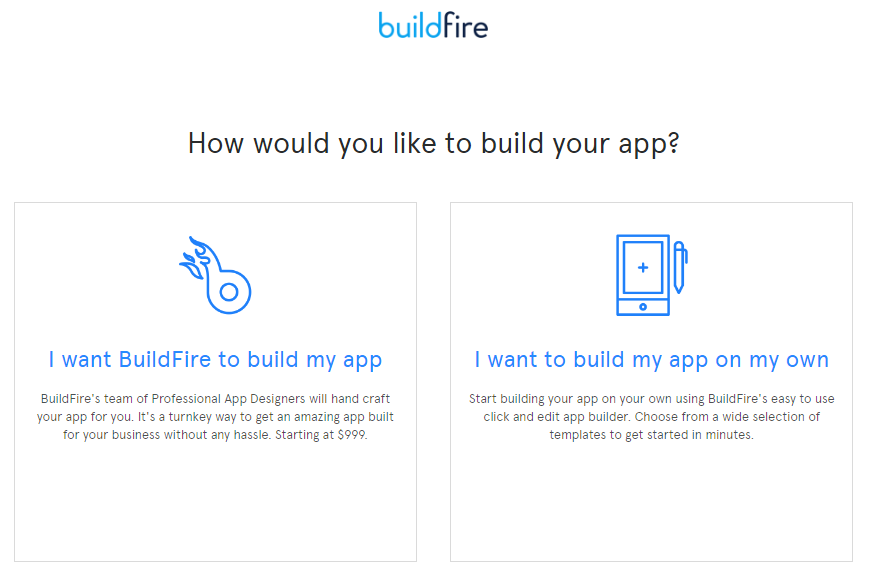
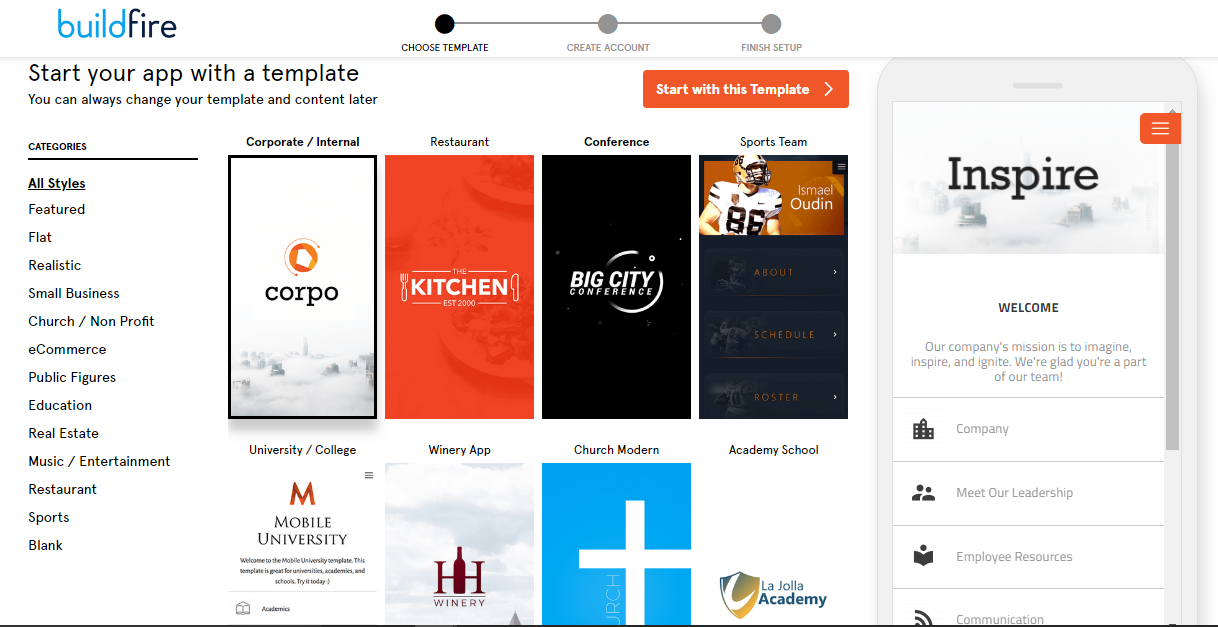

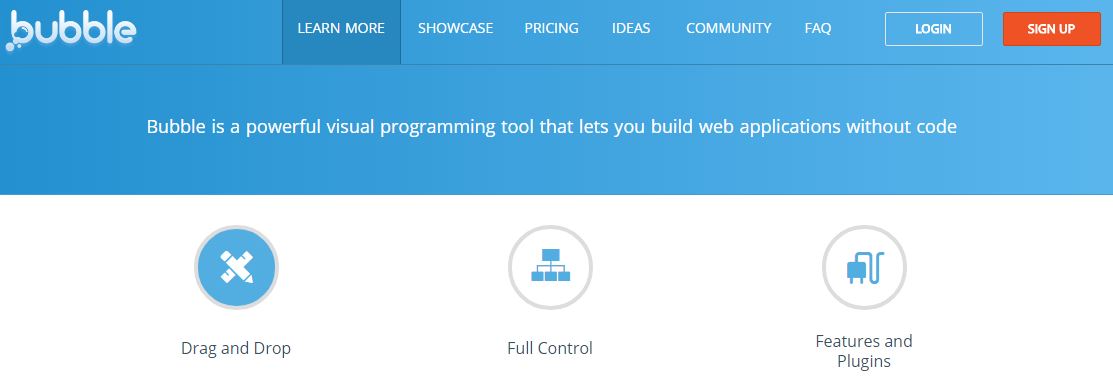
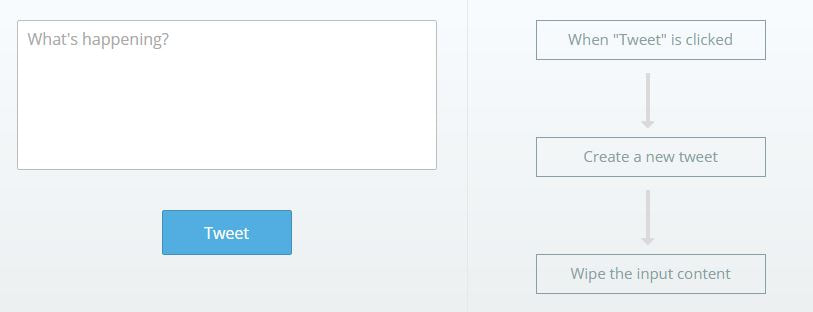
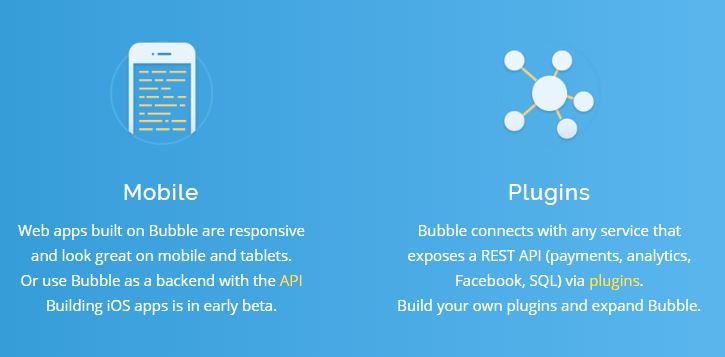
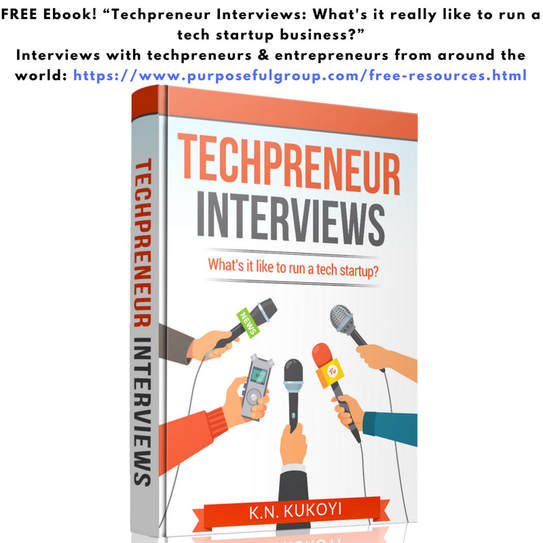
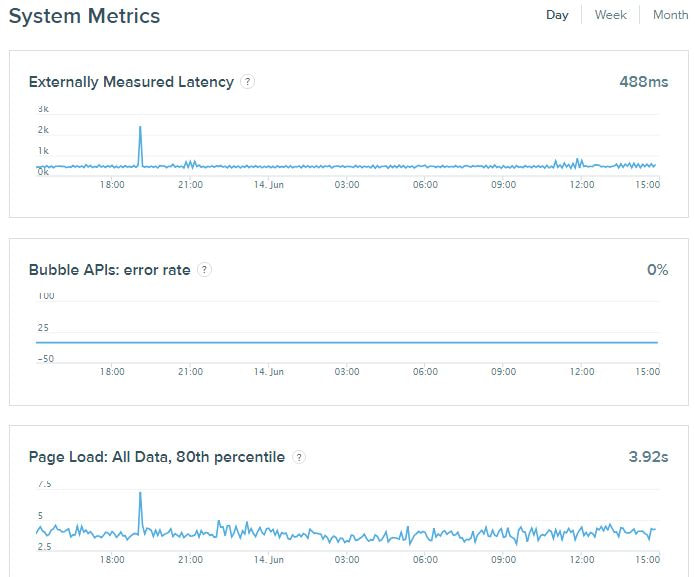
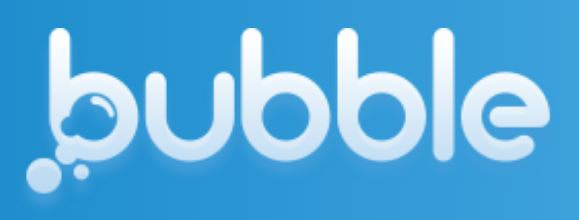
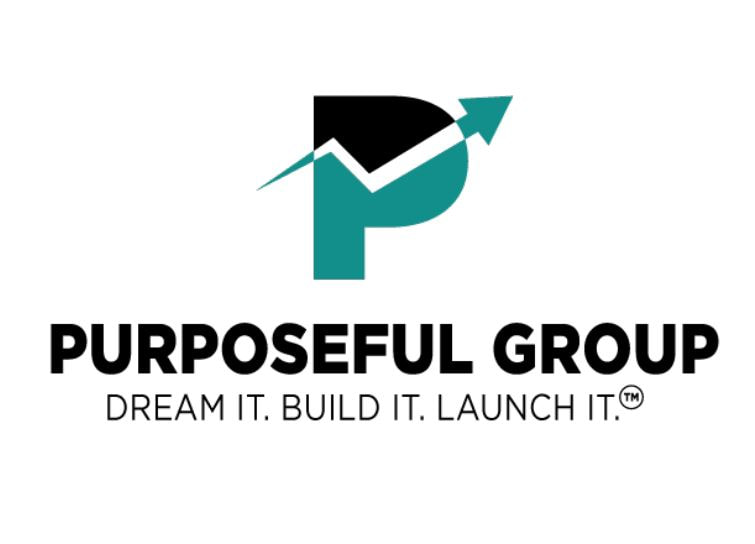
 RSS Feed
RSS Feed